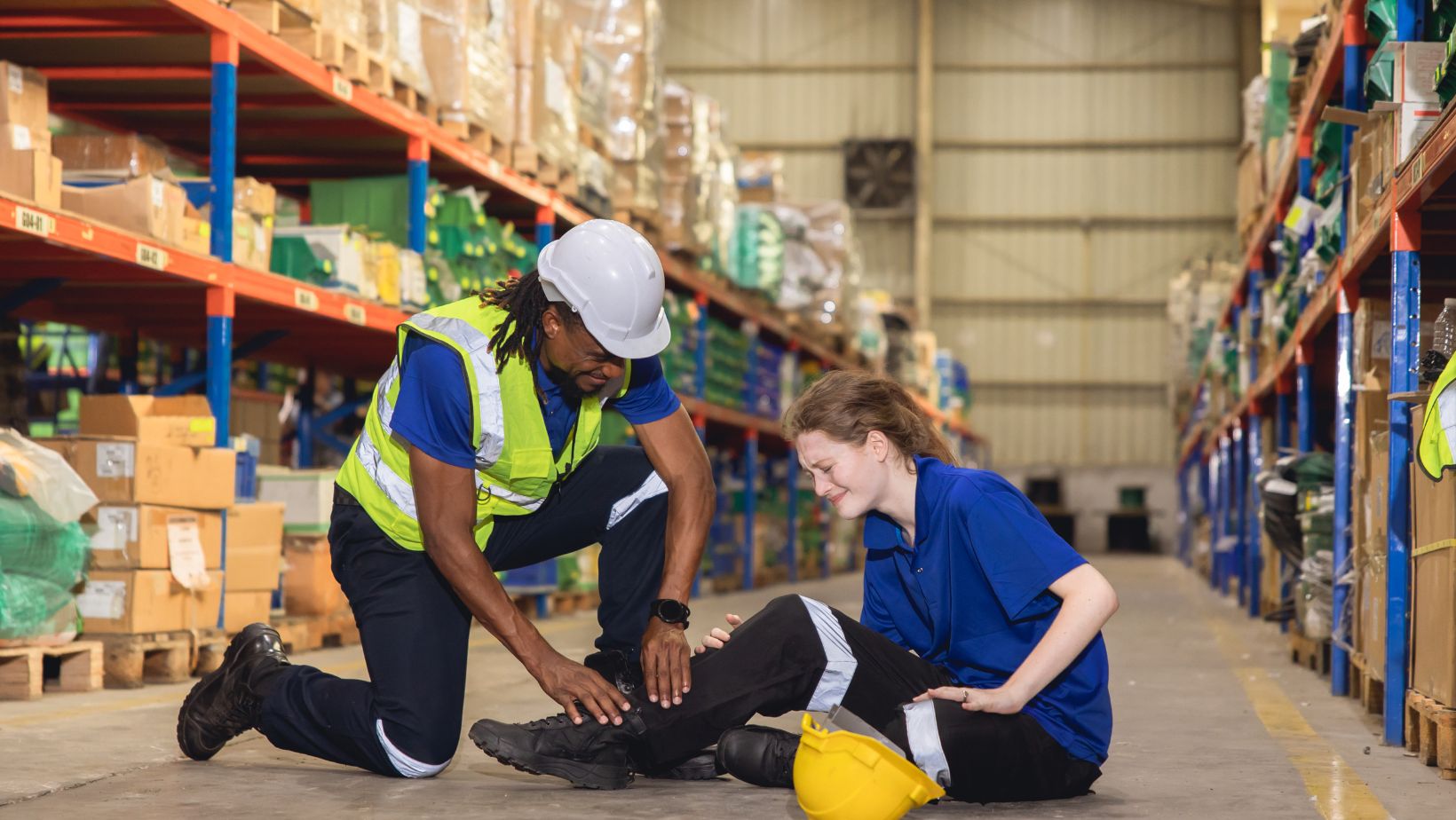Are you prepared in the event of an accidental slip and fall?
These injuries can occur in any workplace, but certain work environments are more prone to such events than others, such as construction sites, warehouses, manufacturing facilities, restaurants, and healthcare settings, where spills and floor hazards are more prevalent.
While OSHA standards are in place to prevent such incidents, accidents can still happen. Both employers and employees should be well-versed in slip-and-fall protocol to prevent further injuries.
Not only can unexpected workplace slips and falls result in serious injuries, but employees may also experience lost wages and medical bills, prompting them to navigate an often confusing legal maze to recover income and medical expenses.
While protocols like workers’ compensation are in place to help employees get the coverage they need, filing legal claims may be necessary if the compensation doesn’t adequately cover lost wages and expenses. Some cases may even require third-party premises liability claims against external entities whose negligence may have contributed to the fall.
What Steps Should You Take After a Slip and Fall Accident?
Immediately after a fall, notify the manager on duty. Reporting the incident, even minor ones, as quickly as possible is crucial for health and legal protection. In fact, the natural adrenaline process that kicks in can mask the severity of an injury, especially concussions or internal injuries.
If you find yourself in need of a St. Louis slip and fall accident lawyer, immediate documentation of injuries can help them build a stronger case. Following all prescribed treatment plans from a doctor is also a part of this documentation; precisely following the doctor’s orders makes it harder for insurance companies to find gaps in documentation.
How to Report a Slip and Fall Accident at Work
Don’t ever wait to report an incident to a manager or HR. Your state may enforce strict deadlines for workers’ compensation reporting. Insurance companies will also take note of this. It’s not just important to be prompt but to look prompt in the eyes of insurance companies.
Be as detailed as possible in your written report about the fall, including:
- The time
- Date
- Exact location of the incident
- The cause of the accident
- What were you doing at the time of the accident
- Specific injuries sustained
Retain a copy of the formal written report for your own records.
Tips for Documenting the Accident
Along with a detailed written report, you’ll need to provide visual evidence of the accident. Similar to a car accident, you must document the extent of the injury, including the site of the accident.
Use your smartphone to take as many photos as possible; if you don’t have a phone handy or a functional camera, ask a coworker if they can take pictures. If your coworkers saw the accident, they can serve as vital eyewitnesses for your report.
Document the following:
- Your injuries
- Workplace conditions (broken stairs, uneven floors, etc.)
- The spill or hazardous objects that caused the fall
- Eyewitnesses
- Lighting conditions
- Signage (including absence of warning signs)
- The workclothes you were wearing (i.e., PPE, footwear, etc.)
When gathering eyewitness statements from coworkers (and customers if present), document their full names and contact information. Save (and preserve) your work clothing and footwear; they may come in handy as evidence in your claim.
The Workers’ Compensation Claim Process
The next step is to file a workers’ compensation claim. Workers’ comp is a no-fault insurance program that allows employees to receive benefits regardless of fault.
Generally, employees who collect workers’ compensation cannot sue an employer for negligence. However, you may be able to file a third-party premises liability claim if you can prove an outside party contributed to the hazardous conditions that caused the accident. Such complex claims require legal expertise.
This process requires official claim forms from a state-run workers’ compensation board. These forms must be completed accurately and submitted well before the deadline to the workers’ comp insurance carrier.
Remember to keep meticulous records of all communications between your employer and the insurance carrier. Track all lost wages, including any potentially missed overtime. Workers’ compensation is assessed by looking at wages earned weeks before an accident and may not accurately reflect your earnings.
Always Be Prepared
Being prepared is your best asset in these cases. Stay informed about the latest workers’ compensation protocols, OSHA standards, and legal routes for complex cases. Prioritizing your health and safety above all else is key.





